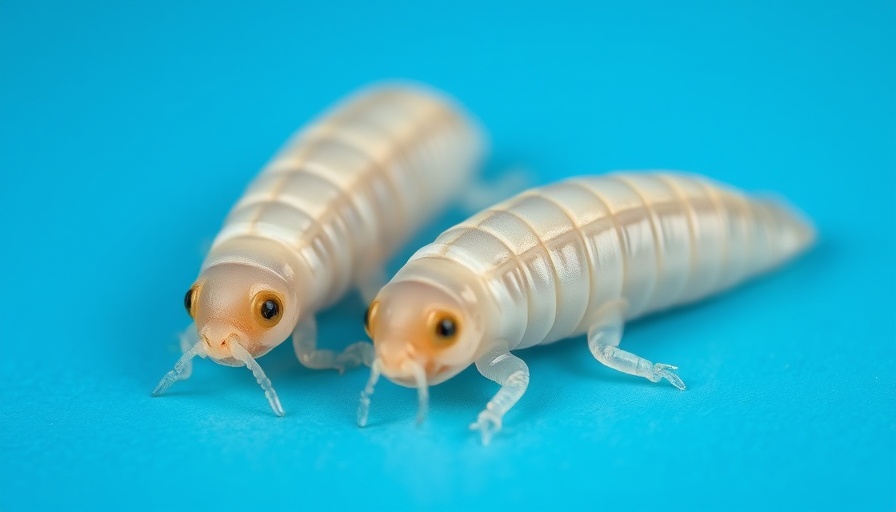
Flesh-Eating Maggots: A Gruesome Comeback in America
The shocking return of flesh-eating maggots, scientifically known as the New World screwworm, has drawn significant attention across the United States. These parasites are not just a nightmarish specter from horror films but a real threat that has resurfaced after nearly six decades. The recent confirmed case in Maryland has raised urgent questions about the safety of both human populations and livestock.
Understanding the Screwworm and Its Infestation
For those unfamiliar, screwworm infestations can have alarming consequences, and their mode of infection is particularly gruesome. A single female screwworm fly is capable of laying up to 3,000 eggs during her lifetime, targeting vulnerable areas like open wounds or cuts. While it might seem that these parasites are contagious, health experts clarify that screwworms cannot spread from person to person. Instead, they are transmittable via the flies that deposit eggs on exposed tissue.
Why Should Americans Be Concerned?
With screwworm infections on the rise, many people wonder about their potential implications. In humans, these infestations, while rare, can be life-threatening. Symptoms can include painful, non-healing sores that might emit a foul smell, along with a creepy sensation of movement under the skin. Without prompt treatment, infections can spread and lead to severe health issues.
Risk to Livestock: An Agricultural Catastrophe?
Apart from health risks to humans, the agricultural impact of screwworms is staggering. The USDA estimates that an outbreak could lead to a devastating loss of up to $1.8 billion in Texas alone, severely affecting cattle ranchers and the beef supply chain. As America’s agriculture is already under overwhelming pressure, adding a costly infestation scenario could have widespread implications.
Preventing and Responding to Infestations
Fortunately, steps can be taken to mitigate the risk of screwworm infestations. The USDA has employed methods like the sterile fly program, releasing sterilized male screwworms into the environment to disrupt their breeding patterns. Furthermore, individuals must be vigilant about skin injuries and monitor their health for any signs of infestation. Knowledge about the behavior of these flies and proactive care can make all the difference.
An Emotional Reaction: How Should We Feel?
The news of flesh-eating maggots in the U.S. undoubtedly evokes feelings of distress and confusion. Many might experience fear or anxiety about health safety, especially with the constant reminders of public health crises. However, it’s crucial to focus on informed action rather than succumb to panic. Understanding the nature of these parasites is the first step toward promoting safety and awareness.
Inspirational Perspectives: Turning Panic into Action
Finally, in challenging times like these, it helps to empower ourselves and those around us with knowledge. Public awareness campaigns can bridge the gap between confusion and understanding, aiding in community resilience. It’s critical for the public to see beyond the horrifying images and focus instead on prevention and education.
Conclusion: Moving Forward with Vigilance
In conclusion, while the alarming return of flesh-eating maggots in the U.S. poses serious health risks, understanding the facts can help mitigate fear. Awareness is key to staying safe and protecting our communities. As we navigate this unsettling development, let’s remember that knowledge, prevention, and a proactive approach ultimately empower us. For a community that cares, education is our strongest ally.
 Add Row
Add Row  Add
Add 



Write A Comment